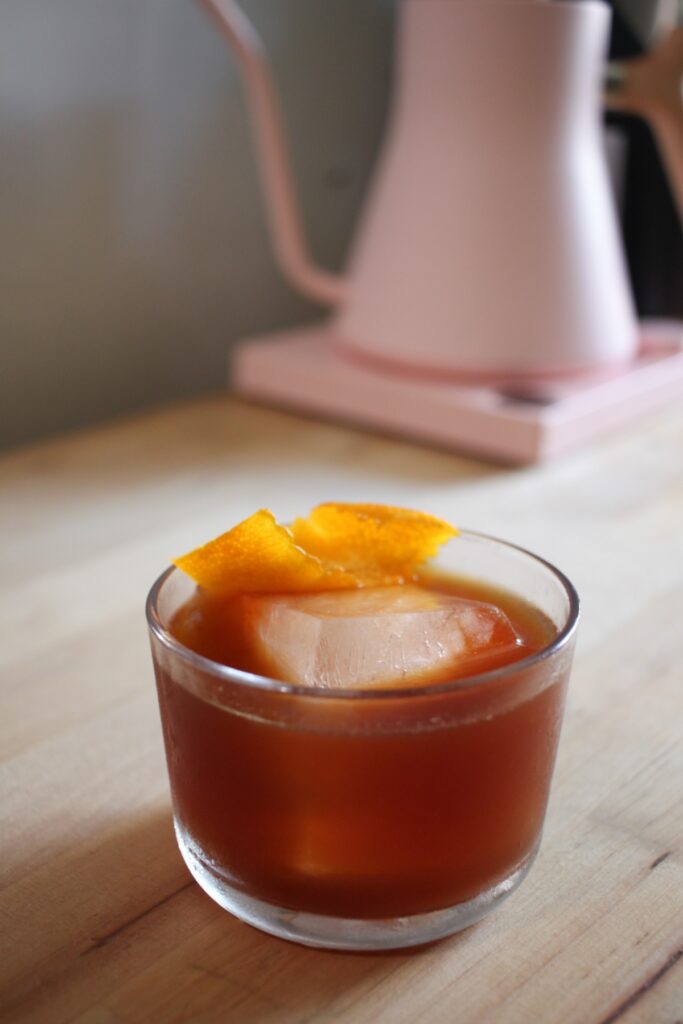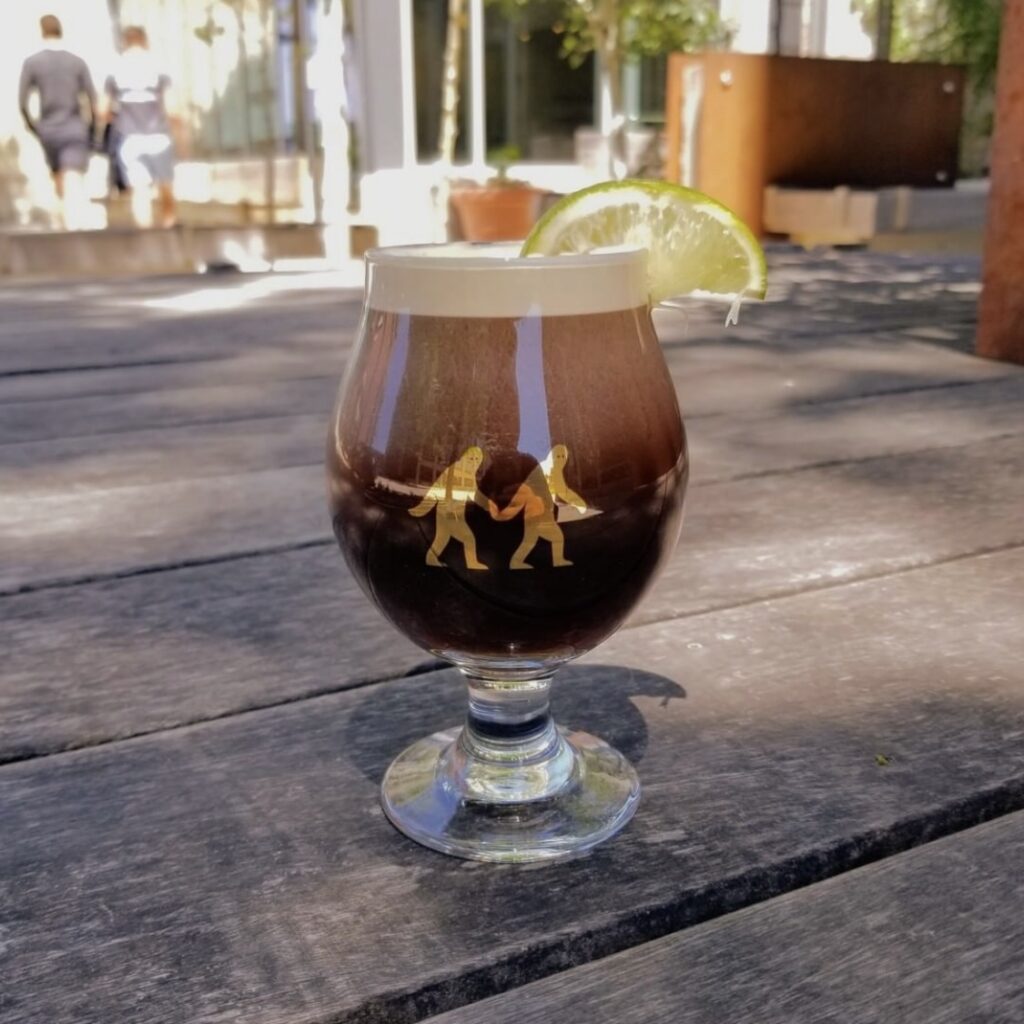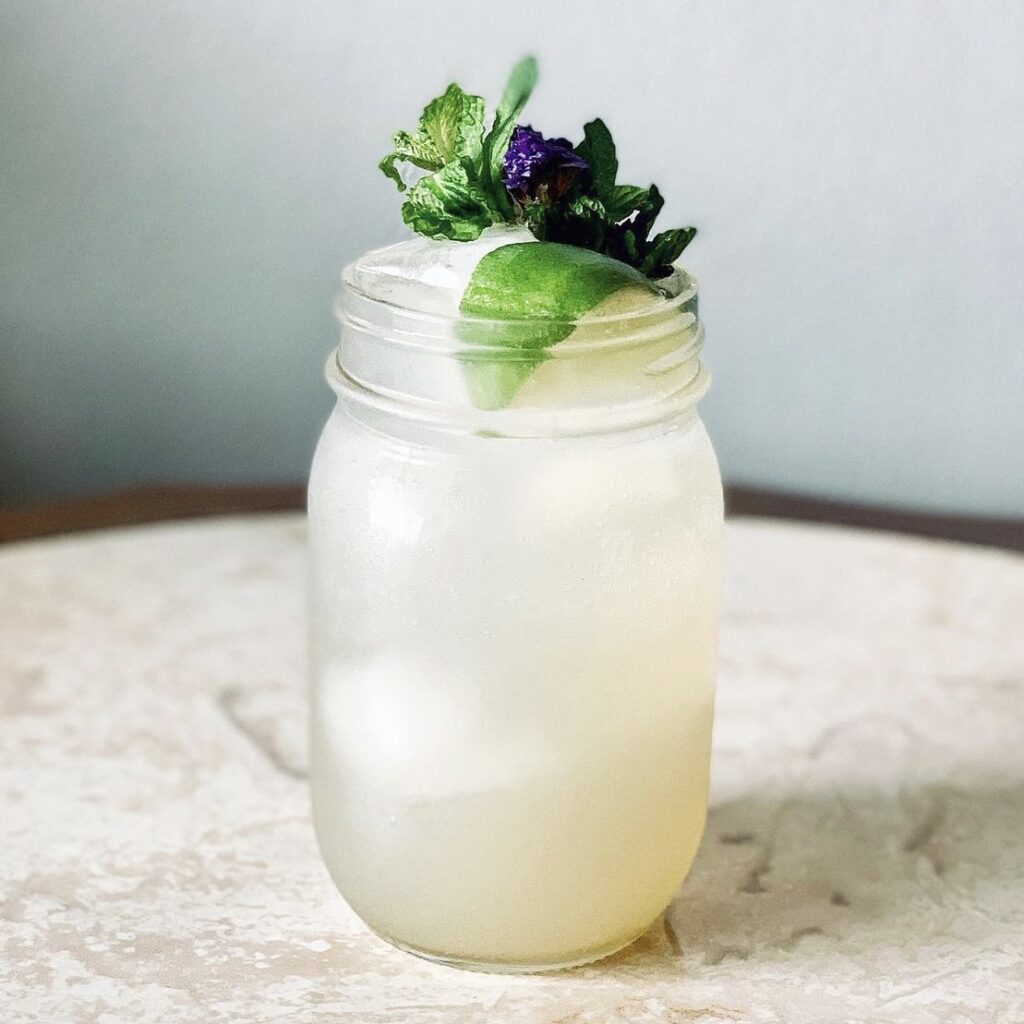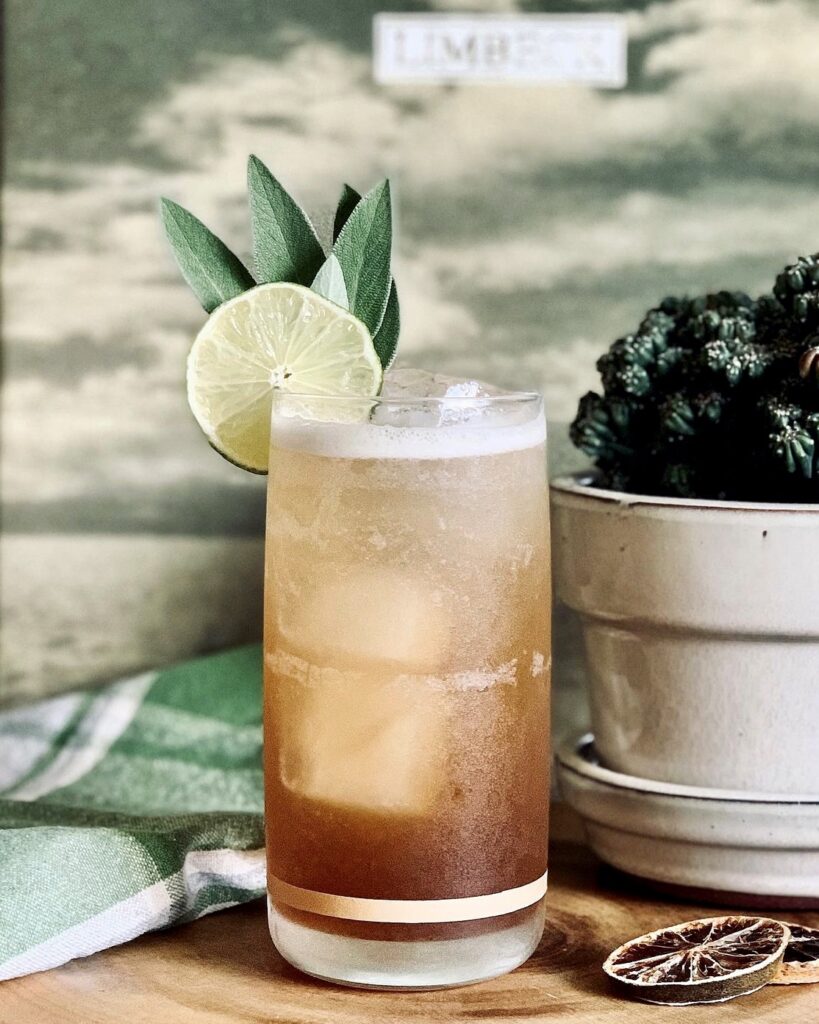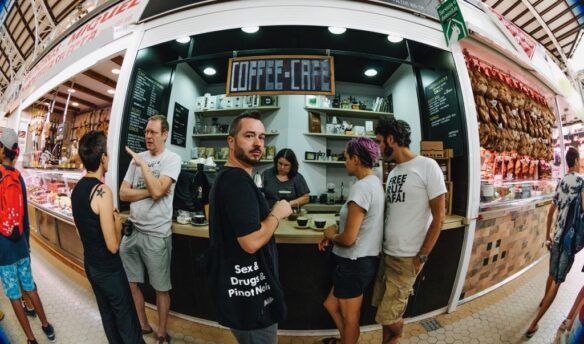Long shadows, late sunsets, evening barbecues, the smell of a storm before it hits: all these sensations, smells, tastes, and textures evoke the feeling of summer. But what makes a drink taste like summer? How can cafés capture that ineffable feeling and translate it into a crowd-pleasing signature beverage (or sig bev, as the coffee pros say)? And logistically, how can shops design summer drinks that make money and work during a rush?
I asked mixology-minded baristas for their top tips on constructing a summer sig bev. Each of their suggestions will help you design drinks that work for the café: ones that are easy to make, have great profit margins, and will have you feeling like summer is here to stay.
Bar Flow and Buy In
Even though sig bevs create a novel flavor experience for customers, building drinks around standard bar workflow helps integrate them into busy services. Ensuring baristas enjoy making the drink is essential for customer experience as well as employee morale.
“When considering workflow to ensure baristas have fun even during rushes, we like to stick with what we know,” says Kristina D and Becca P of Cerberus Coffee (we’re using initials for privacy reasons) in Jacksonville, Oregon. “Following the same basic formula when concocting recipes ensures the team isn’t thrown any curveballs when prepping ingredients,” they say. Kristina and Becca suggest building drinks around “the natural muscle memory of service by not changing up tools, measuring units, or ratios unless absolutely necessary.”
“Keep everything as simple as possible, from the ingredients to the drink prep to the making of the drink itself,” says Steph Achter, barista and sig bev maven at Likewise Coffee in Milwaukee. They emphasize that recipes shouldn’t disrupt workflow or require a lot of prep time. “If baristas enjoy making it, we’ll be much more likely to recommend it to customers.”
Aireus Robinson agrees. He’s a self-described nomadic barista, Go Fund Bean board member, and 2022 Glitter Cat finalist. “Your signature beverages should slip into your standard café workflow with such ease that they needn’t interrupt service,” he says. “They should be as easy to incorporate into a line of drinks as a flat white or a cortado, and they should be able to be made in droves in the case of a rush.”
He also emphasizes listening to baristas. “We know which customers like extra syrup in their drinks. We know which customers won’t appreciate our one-of-a-kind single-origin red honey carbonic maceration processed Gesha and instead want a cup of coffee that tastes like chocolate and raisins.” The same logic applies to signature beverage design, he says. “If a barista says something isn’t working, work with them to alter the drink until it works or scrap the project altogether.”
Batch Everything
One of the keys to making a sig bev your baristas love to make is creating a recipe they can craft in batches, minimizing labor. While most baristas love to create bespoke drinks, executing them repeatedly during a rush is a different story. The ideal sig bev has ingredients that can be bulk-prepped in advance, batched, and measured out with as little work as possible.
“Whenever possible, batch sig bev components,” says Angela Ferrara, veteran barista, educator, seasonal menu developer, and now marketing manager at Rancilio North America. “Whether it’s a coffee or tea concentrate, a syrup, an infusion, a special garnish, or even just combining ingredients, having things as ready as possible when the drink is ordered is a key time-saver.”
One way to do this is using brewed coffee or tea as the base component instead of espresso. “Espresso sig bevs are great, but can easily clog up workflow,” she says
Robinson is all about batching. “Presentation only matters once the beverage is in the customer’s hand. They’re unaware of most of the processes behind the bar.”
While it might feel like baristas may have a bias against batching drinks—perhaps stemming from the idea that batching makes a drink less special—Robinson says the association of more labor with more care is something we need to unlearn. Batching doesn’t make a drink any less thoughtful and carefully constructed.
Maximize Ingredients & Shelf Life
“When developing sig bevs, make sure you’re able to reliably and cost-effectively source every ingredient,” says Achter. “You want to be sure that the drink can be made for as long as you have it on the menu and that your profit margins are consistent.”
To craft a cost-effective sig beverage, look at what is already available at the café. “If your café has a kitchen or shares space with a restaurant, consider how you can incorporate spent ingredients from other dishes into a sig bev,” says Ferrara.
Achter agrees. “Look at the ingredients you already have in the café and let them guide you. If the baker is zesting citrus for a pastry, what can you use the juice for? Which of your loose leaf teas would be great made into a syrup? Is there a bottle of fennel seeds or a bag of dried hibiscus gathering dust in the kitchen?”
Robinson emphasizes shelf stability as an essential factor for batching drinks. “Look at your recipe and understand what you can break down into a shelf-stable mix. Suppose your signature beverage involves tea, simple syrup, bitters, and a garnish. In this example, you can batch the simple syrup into the tea. The added sugars help make the tea shelf-stable and reduce the labor that goes into the workflow for constructing the drink.”
He also works to optimize ingredients for maximum efficiency. Inspired by the aphorism “when life gives you lemons, make lemonade,” he uses the example to demonstrate how a barista can use lemon in several ways to make base ingredients for a signature drink. “The lemon gets zested (for a lemon-salt garnish), peeled (for candied lemon peel garnish), then finally turned into lemonade. From this process, you’ve created three different ingredients that can be the staple of another signature beverage, thus lowering your production cost.”
Summer Flavors
What does summer taste like? A sig bev should pair well with the weather and the season’s vibe.
The two primary tastes of summer from sig bev specialists I talked to were tropical and locally-inspired seasonal flavors.
“I love tropical flavors like pineapple and mango, both of which are surprisingly delicious with coffee,” says Achter, “especially with an added kick from spices like cinnamon, ginger, allspice, and black pepper.”
Ferrara agrees, citing “citrus, melon, pineapple, coconut, and mint” as go-to ingredients.
Oregonians Kristina and Becca focus on what’s seasonal locally. “Wherever you are, there’s something to be said about following the principle ‘if it grows together, it goes together,’” they say. “Chamomile growing on the roadside during the morning commute draws inspiration for a new donut flavor, or greens grown by our friends at Wayward Acres get incorporated into our weekend bakes. Every day the area around us informs our creative process.”
Robinson loves the locally-influenced starting points of cucumber, melon, and lemon-lavender combos. “Cucumber and watermelon are incredible summer thirst-quenchers that can take the sweet, salty, or spicy route in a drink,” he says.
Sig bevs are a great way to add novelty to your menu, connect with seasonality, and expand revenue. If you want to add a sig bev to your menu for the first time, it may feel daunting, but all the ingredients are there. All it takes is a little experimentation and a sense of adventure.
Cover photo courtsey of Steph Achter
RJ Joseph is a coffee writer focusing primarily on equity, workers’ rights, and structural alternatives to the status quo. She’s been a barista, a roaster, a green coffee grader and lab tech, and finally made coffee writing her full-time gig at Red Fox Coffee Merchants. In her decade in coffee, she’s also run a queer coffee events organization, written a blog on equity in coffee, and run a coffee satire website called The Knockbox. If you see her around, say hi.




